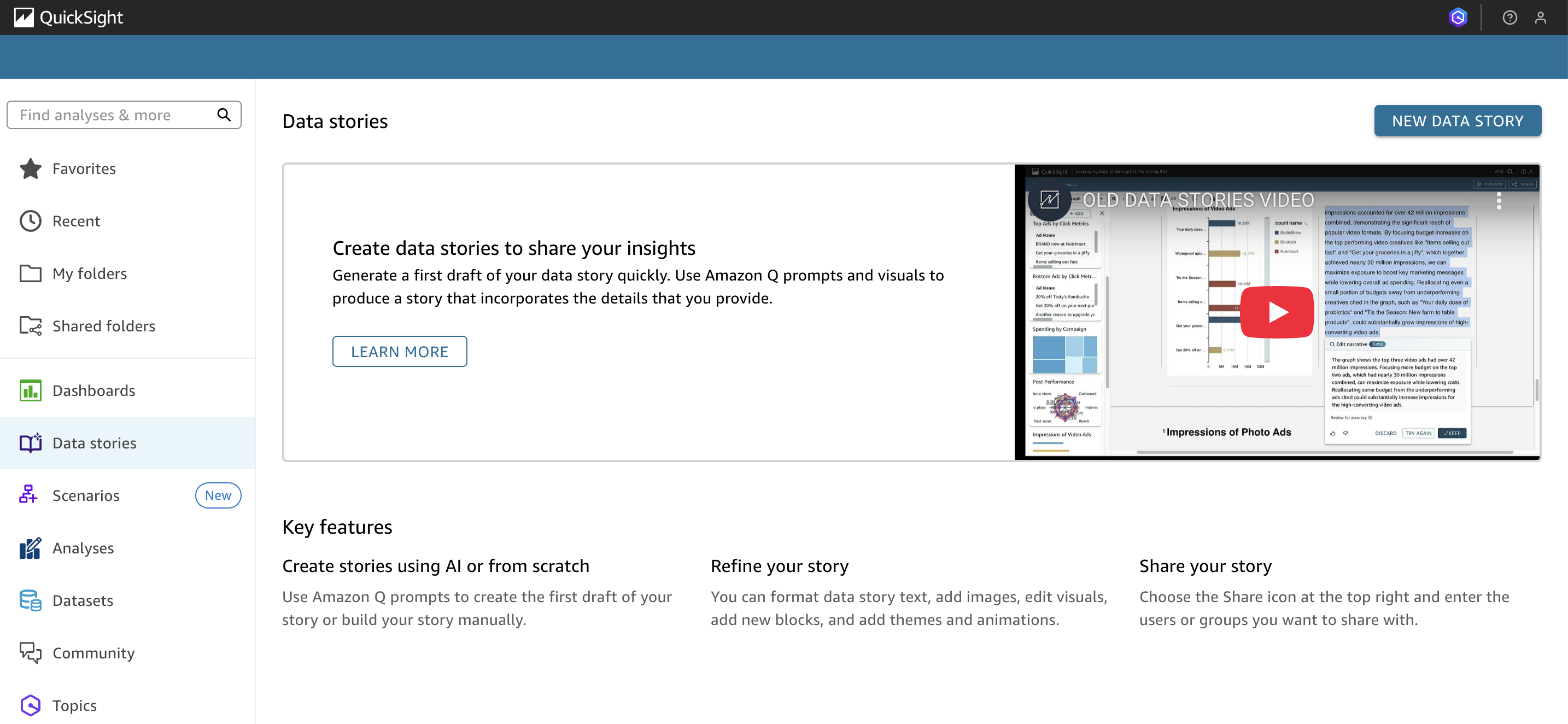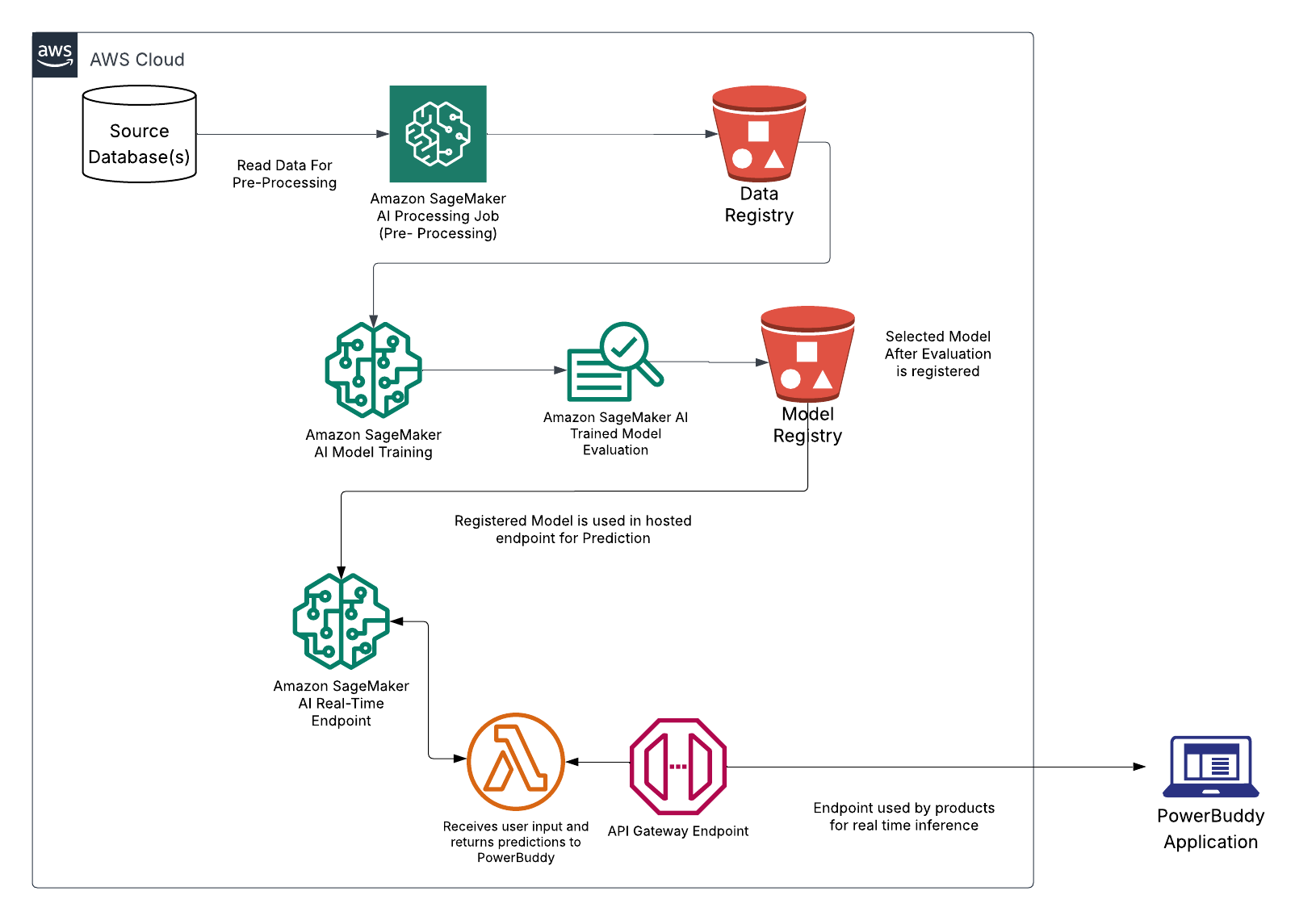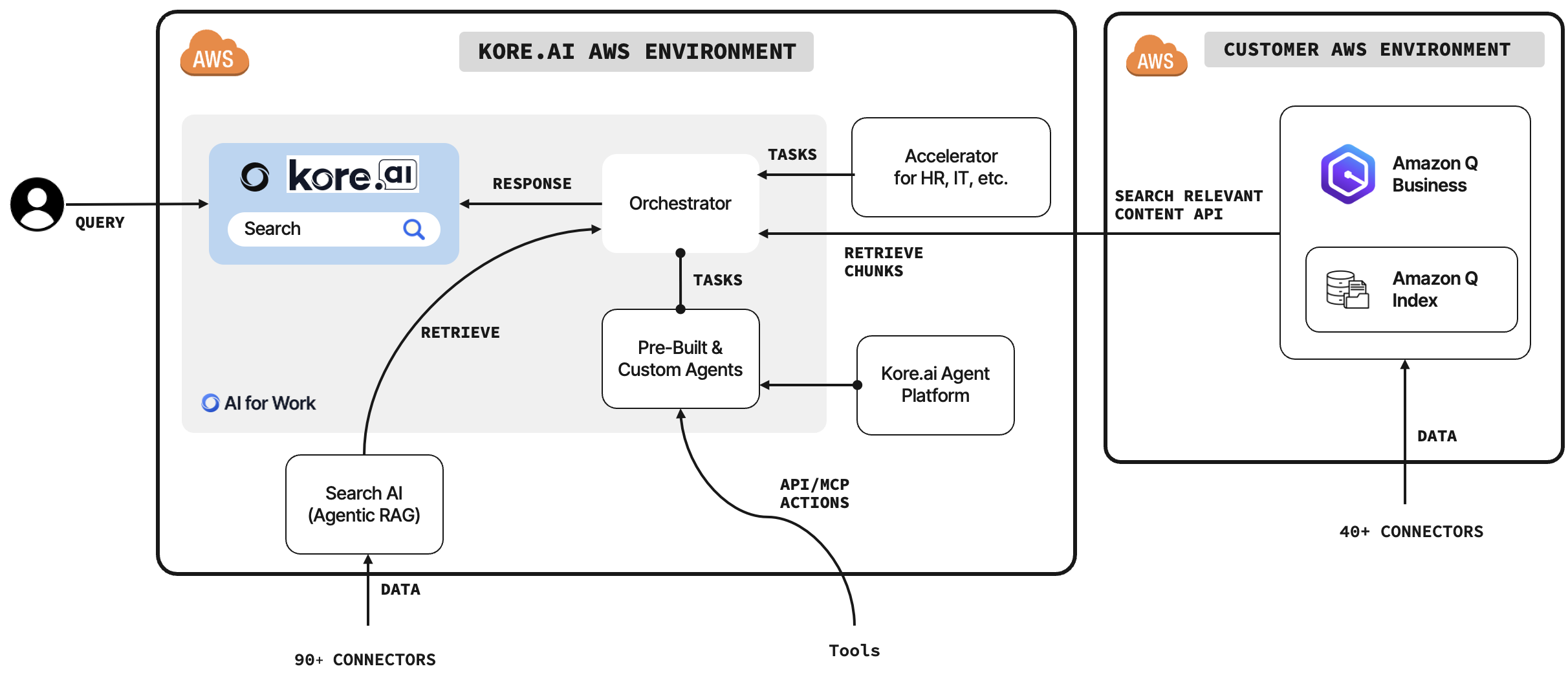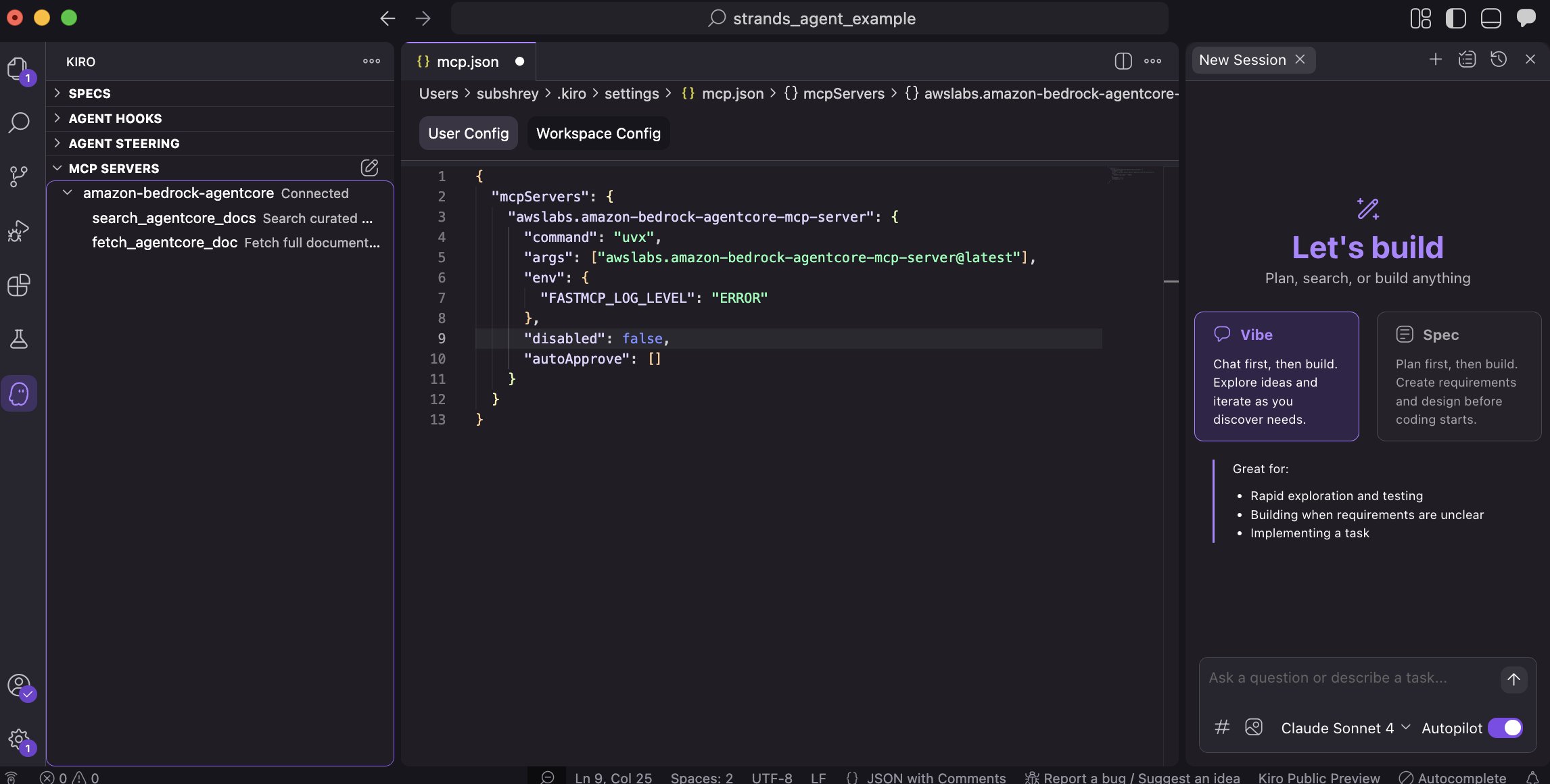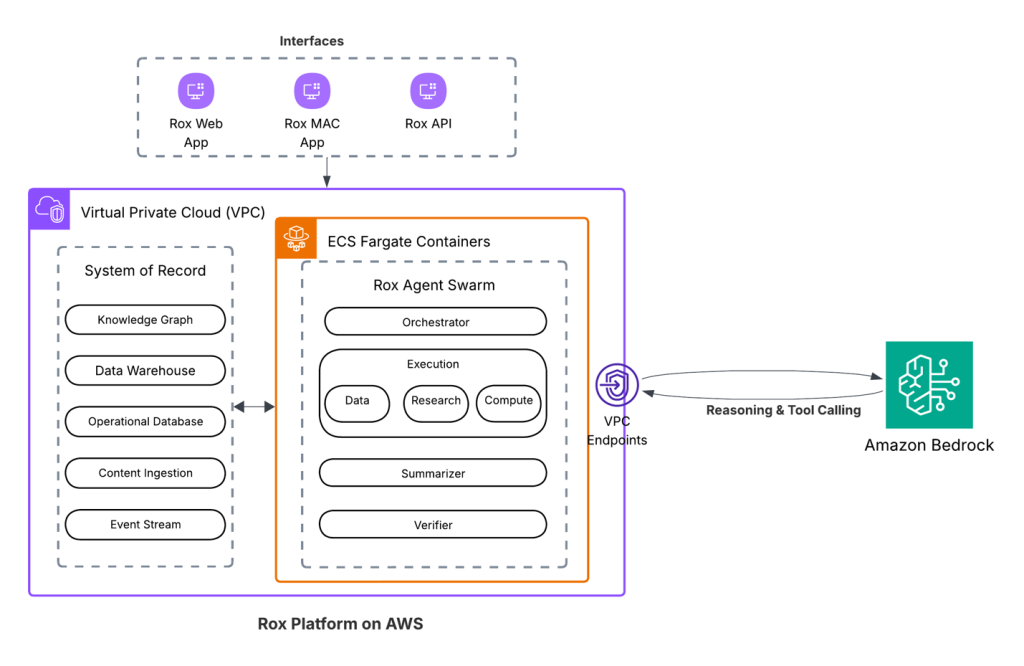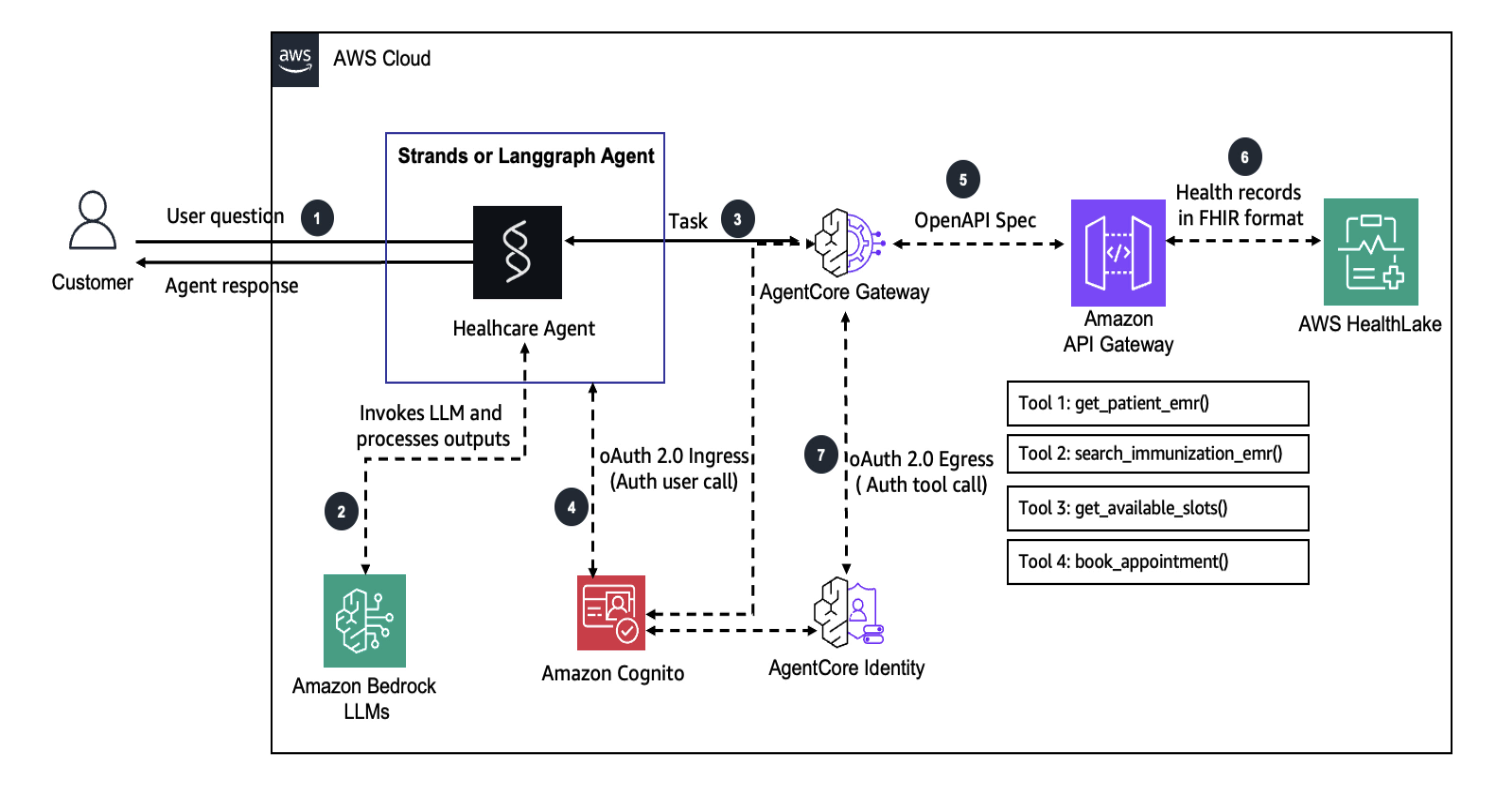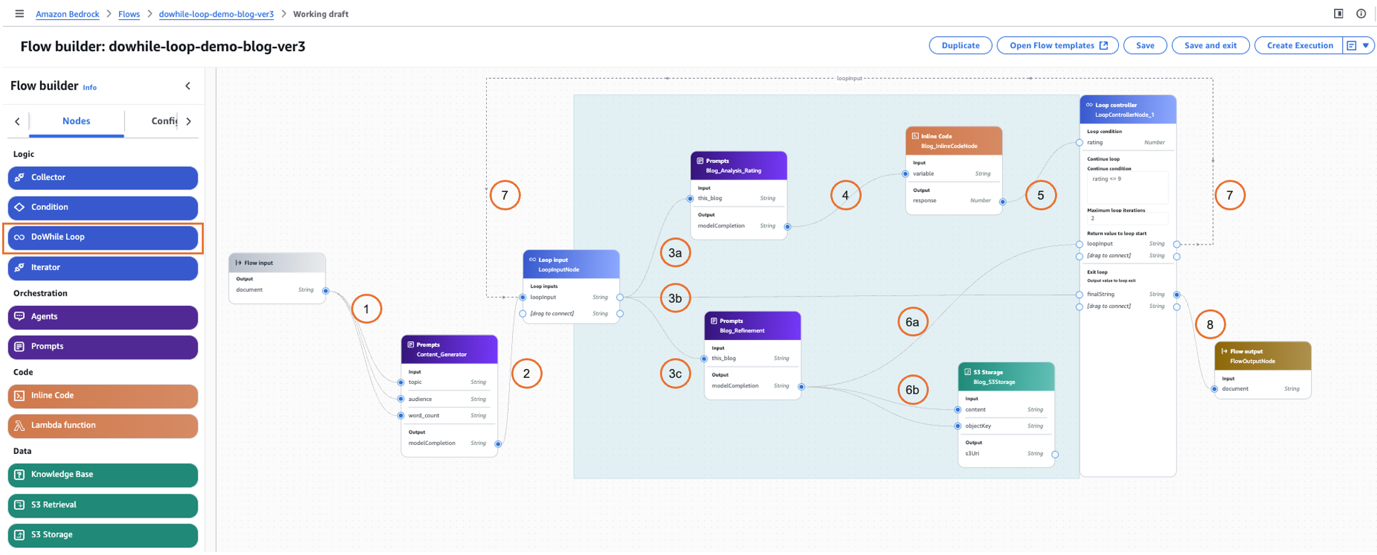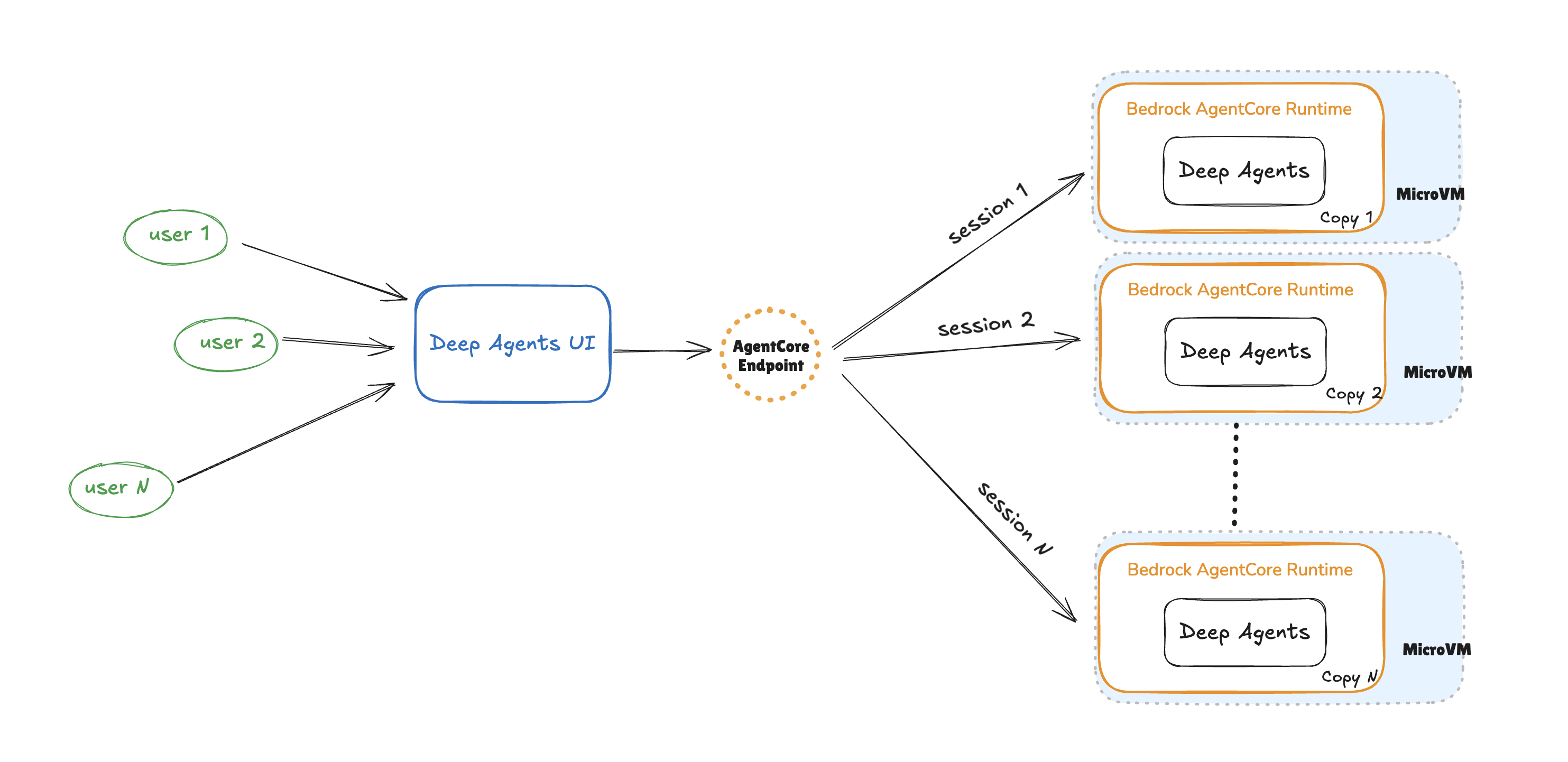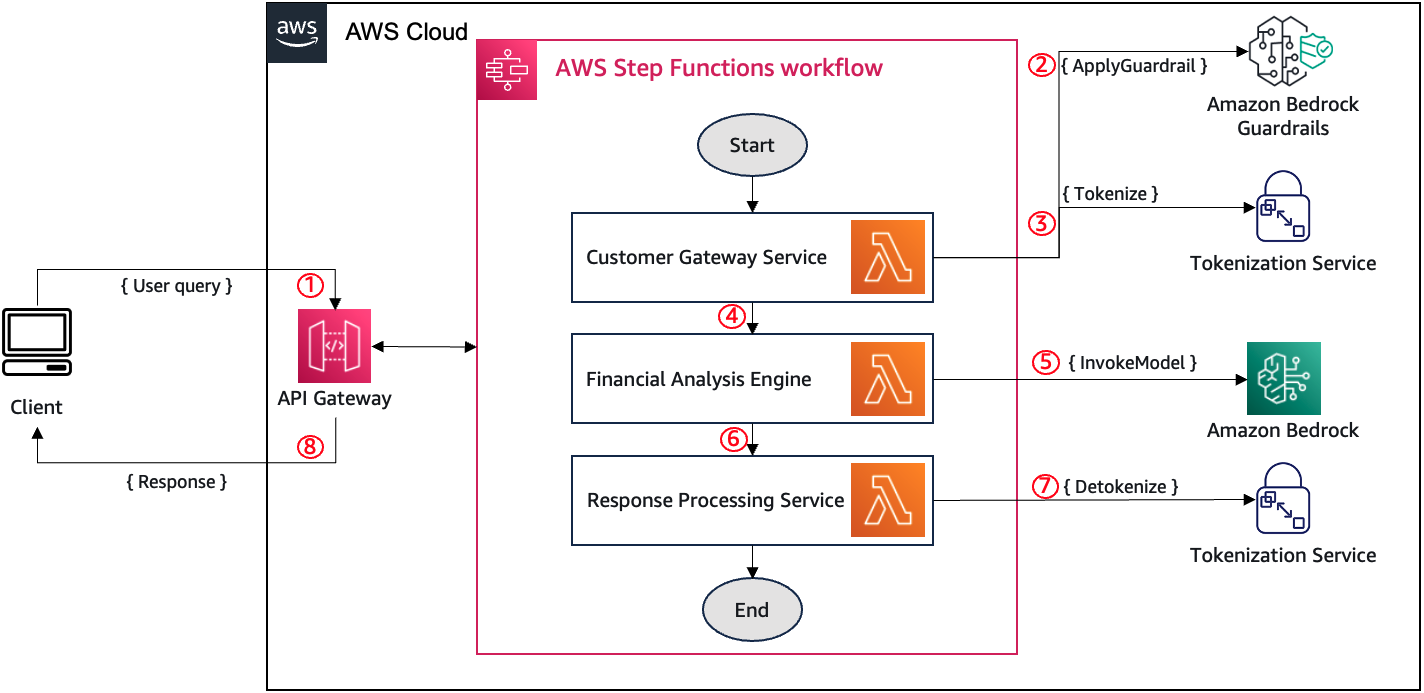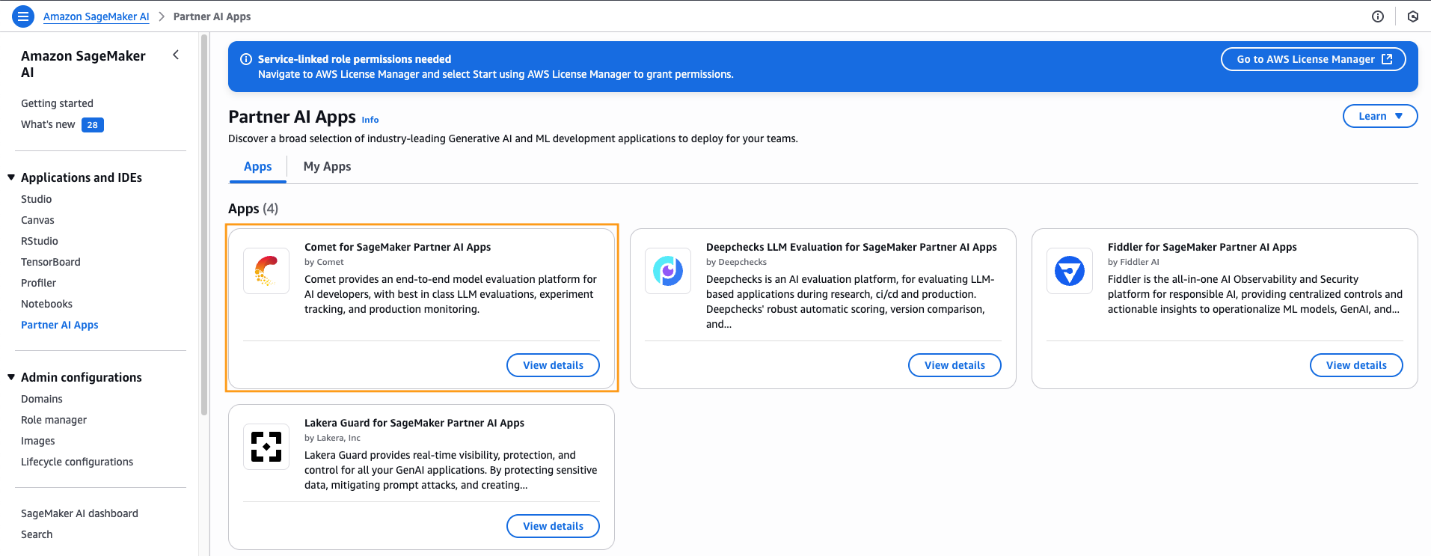Artificial Intelligence Official Machine Learning Blog of Amazon Web Services
- Automate Amazon QuickSight data stories creation with agentic AI using Amazon Nova Actby Satish Bhonsle on October 7, 2025 at 5:43 pm
In this post, we demonstrate how Amazon Nova Act automates QuickSight data story creation, saving time so you can focus on making critical, data-driven business decisions.
- Implement automated monitoring for Amazon Bedrock batch inferenceby Durga Prasad on October 7, 2025 at 5:39 pm
In this post, we demonstrated how a financial services company can use an FM to process large volumes of customer records and get specific data-driven product recommendations. We also showed how to implement an automated monitoring solution for Amazon Bedrock batch inference jobs. By using EventBridge, Lambda, and DynamoDB, you can gain real-time visibility into batch processing operations, so you can efficiently generate personalized product recommendations based on customer credit data.
- Responsible AI: How PowerSchool safeguards millions of students with AI-powered content filtering using Amazon SageMaker AIby Anjali Vijayakumar on October 6, 2025 at 7:14 pm
In this post, we demonstrate how PowerSchool built and deployed a custom content filtering solution using Amazon SageMaker AI that achieved better accuracy while maintaining low false positive rates. We walk through our technical approach to fine tuning Llama 3.1 8B, our deployment architecture, and the performance results from internal validations.
- Unlock global AI inference scalability using new global cross-Region inference on Amazon Bedrock with Anthropic’s Claude Sonnet 4.5by Melanie Li on October 3, 2025 at 9:37 pm
Organizations are increasingly integrating generative AI capabilities into their applications to enhance customer experiences, streamline operations, and drive innovation. As generative AI workloads continue to grow in scale and importance, organizations face new challenges in maintaining consistent performance, reliability, and availability of their AI-powered applications. Customers are looking to scale their AI inference workloads across
- Secure ingress connectivity to Amazon Bedrock AgentCore Gateway using interface VPC endpointsby Dhawalkumar Patel on October 3, 2025 at 8:08 pm
In this post, we demonstrate how to access AgentCore Gateway through a VPC interface endpoint from an Amazon Elastic Compute Cloud (Amazon EC2) instance in a VPC. We also show how to configure your VPC endpoint policy to provide secure access to the AgentCore Gateway while maintaining the principle of least privilege access.
- Enhance agentic workflows with enterprise search using Kore.ai and Amazon Q Businessby Siddhant Gupta on October 2, 2025 at 10:14 pm
In this post, we demonstrate how organizations can enhance their employee productivity by integrating Kore.ai’s AI for Work platform with Amazon Q Business. We show how to configure AI for Work as a data accessor for Amazon Q index for independent software vendors (ISVs), so employees can search enterprise knowledge and execute end-to-end agentic workflows involving search, reasoning, actions, and content generation.
- Accelerate development with the Amazon Bedrock AgentCore MCP serverby Shreyas Subramanian on October 2, 2025 at 9:12 pm
Today, we’re excited to announce the Amazon Bedrock AgentCore Model Context Protocol (MCP) Server. With built-in support for runtime, gateway integration, identity management, and agent memory, the AgentCore MCP Server is purpose-built to speed up creation of components compatible with Bedrock AgentCore. You can use the AgentCore MCP server for rapid prototyping, production AI solutions,
- Rox accelerates sales productivity with AI agents powered by Amazon Bedrockby Santhan Pamulapati on October 1, 2025 at 6:13 pm
We’re excited to announce that Rox is generally available, with Rox infrastructure built on AWS and delivered across web, Slack, macOS, and iOS. In this post, we share how Rox accelerates sales productivity with AI agents powered by Amazon Bedrock.
- Modernize fraud prevention: GraphStorm v0.5 for real-time inferenceby Jian Zhang on September 30, 2025 at 8:29 pm
In this post, we demonstrate how to implement real-time fraud prevention using GraphStorm v0.5’s new capabilities for deploying graph neural network (GNN) models through Amazon SageMaker. We show how to transition from model training to production-ready inference endpoints with minimal operational overhead, enabling sub-second fraud detection on transaction graphs with billions of nodes and edges.
- Building health care agents using Amazon Bedrock AgentCoreby Kamal Manchanda on September 26, 2025 at 4:03 pm
In this solution, we demonstrate how the user (a parent) can interact with a Strands or LangGraph agent in conversational style and get information about the immunization history and schedule of their child, inquire about the available slots, and book appointments. With some changes, AI agents can be made event-driven so that they can automatically send reminders, book appointments, and so on.
- Build multi-agent site reliability engineering assistants with Amazon Bedrock AgentCoreby Amit Arora on September 26, 2025 at 3:58 pm
In this post, we demonstrate how to build a multi-agent SRE assistant using Amazon Bedrock AgentCore, LangGraph, and the Model Context Protocol (MCP). This system deploys specialized AI agents that collaborate to provide the deep, contextual intelligence that modern SRE teams need for effective incident response and infrastructure management.
- DoWhile loops now supported in Amazon Bedrock Flowsby Shubhankar Sumar on September 25, 2025 at 8:25 pm
Today, we are excited to announce support for DoWhile loops in Amazon Bedrock Flows. With this powerful new capability, you can create iterative, condition-based workflows directly within your Amazon Bedrock flows, using Prompt nodes, AWS Lambda functions, Amazon Bedrock Agents, Amazon Bedrock Flows inline code, Amazon Bedrock Knowledge Bases, Amazon Simple Storage Service (Amazon S3),
- How PropHero built an intelligent property investment advisor with continuous evaluation using Amazon Bedrockby Adithya Suresh on September 25, 2025 at 7:25 pm
In this post, we explore how we built a multi-agent conversational AI system using Amazon Bedrock that delivers knowledge-grounded property investment advice. We explore the agent architecture, model selection strategy, and comprehensive continuous evaluation system that facilitates quality conversations while facilitating rapid iteration and improvement.
- Accelerate benefits claims processing with Amazon Bedrock Data Automationby Saurabh Kumar on September 25, 2025 at 7:20 pm
In the benefits administration industry, claims processing is a vital operational pillar that makes sure employees and beneficiaries receive timely benefits, such as health, dental, or disability payments, while controlling costs and adhering to regulations like HIPAA and ERISA. In this post, we examine the typical benefit claims processing workflow and identify where generative AI-powered automation can deliver the greatest impact.
- Running deep research AI agents on Amazon Bedrock AgentCoreby Vadim Omeltchenko on September 23, 2025 at 8:35 pm
AI agents are evolving beyond basic single-task helpers into more powerful systems that can plan, critique, and collaborate with other agents to solve complex problems. Deep Agents—a recently introduced framework built on LangGraph—bring these capabilities to life, enabling multi-agent workflows that mirror real-world team dynamics. The challenge, however, is not just building such agents but
- Integrate tokenization with Amazon Bedrock Guardrails for secure data handlingby Nizar Kheir on September 23, 2025 at 5:31 pm
In this post, we show you how to integrate Amazon Bedrock Guardrails with third-party tokenization services to protect sensitive data while maintaining data reversibility. By combining these technologies, organizations can implement stronger privacy controls while preserving the functionality of their generative AI applications and related systems.
- Rapid ML experimentation for enterprises with Amazon SageMaker AI and Cometby Vikesh Pandey on September 22, 2025 at 5:12 pm
In this post, we showed how to use SageMaker and Comet together to spin up fully managed ML environments with reproducibility and experiment tracking capabilities.
- Move your AI agents from proof of concept to production with Amazon Bedrock AgentCoreby Maira Ladeira Tanke on September 19, 2025 at 4:09 pm
This post explores how Amazon Bedrock AgentCore helps you transition your agentic applications from experimental proof of concept to production-ready systems. We follow the journey of a customer support agent that evolves from a simple local prototype to a comprehensive, enterprise-grade solution capable of handling multiple concurrent users while maintaining security and performance standards.
- Scale visual production using Stability AI Image Services in Amazon Bedrockby Alex Gnibus on September 18, 2025 at 9:25 pm
This post was written with Alex Gnibus of Stability AI. Stability AI Image Services are now available in Amazon Bedrock, offering ready-to-use media editing capabilities delivered through the Amazon Bedrock API. These image editing tools expand on the capabilities of Stability AI’s Stable Diffusion 3.5 models (SD3.5) and Stable Image Core and Ultra models, which
- Prompting for precision with Stability AI Image Services in Amazon Bedrockby Suleman Patel on September 18, 2025 at 9:25 pm
Amazon Bedrock now offers Stability AI Image Services: 9 tools that improve how businesses create and modify images. The technology extends Stable Diffusion and Stable Image models to give you precise control over image creation and editing. Clear prompts are critical—they provide art direction to the AI system. Strong prompts control specific elements like tone,


